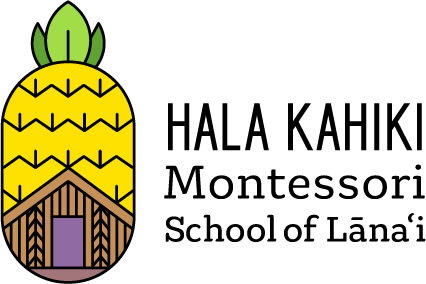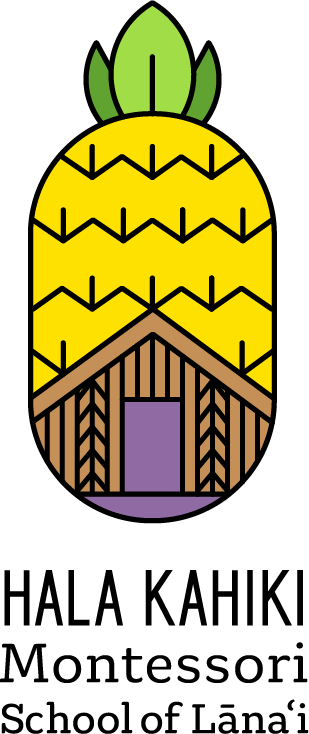Early literacy begins long before a child learns to read words on a page. From birth, children are absorbing language—sounds, rhythms, vocabulary, and meaning—that form the foundation for reading and writing. Maria Montessori described this as the “sensitive period for language,” when the young child naturally and effortlessly acquires communication skills through their environment.
What is Early Literacy?
Early literacy is more than knowing the ABCs. It encompasses:
- Oral language – listening, speaking, and engaging in meaningful conversation.
- Vocabulary and comprehension – understanding words in context.
- Phonological awareness – recognizing sounds, rhymes, and syllables.
- Symbolic thinking – connecting spoken language with written symbols.
- Fine motor readiness – developing the strength and control needed for writing.
Montessori education supports this holistic view by integrating language into every part of the child’s daily experience.
Literacy Development from Birth to Age 3
In the first three years of life, children are not yet reading or writing in the conventional sense. Instead, they are laying the groundwork for literacy by absorbing everything they hear and see. Key supports include:
- Conversations and storytelling – adults narrate daily life, pause to let the child respond (even before they can speak), and introduce new vocabulary.
- Books and sound play – rhymes, poetry, songs, and games like “I Spy” nurture listening and sound awareness.
- Sensory and motor activities – scribbling with block crayons, finger-tracing in sand, squeezing dough, or pouring water strengthen the hand and prepare the child for writing later.
For spoken language to flourish, four conditions are necessary: healthy hearing, a functioning speech system, a rich language environment, and the child’s natural desire to communicate. As Montessori wrote, “If a child is to acquire language, they must live among people who speak it.”

Literacy Development from Ages 3 to 6
During the preschool and kindergarten years, children begin to explore reading and writing more intentionally. Montessori classrooms guide them through:
- Oral language – storytelling, poetry, and conversation expand vocabulary and comprehension.
- Phonemic awareness – sound games train the ear to hear and blend sounds.
- Preparation of the hand – fine motor activities like tracing, pinching, pouring, and sewing develop control and strength.
- Writing before reading – children build words with the moveable alphabet before handwriting is mastered, and trace sandpaper letters to connect sound, symbol, and movement.
- Reading for meaning – phonetic reading leads naturally to fluent reading and comprehension. Montessori described two steps of reading: phonetic (decoding sounds) and total reading (understanding meaning).
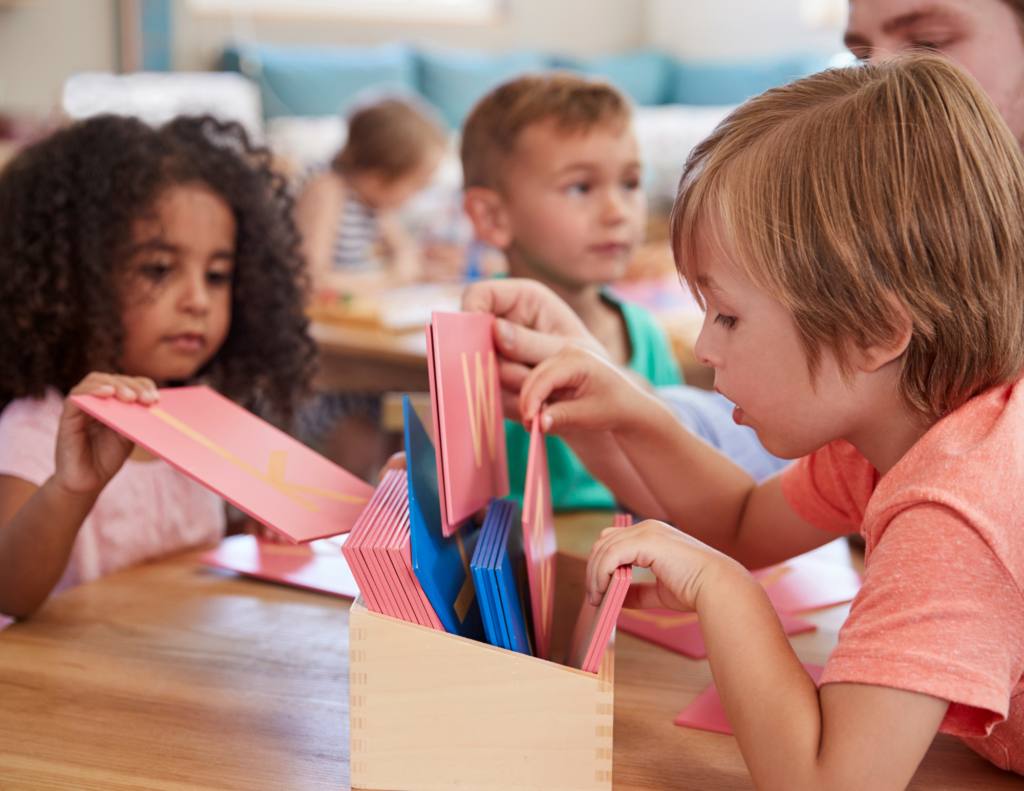
Supporting Literacy at Home
Families are children’s first teachers. Here are practical ways to nurture early literacy at home:
- Read aloud daily and let your child see you reading. Repetition builds comfort and confidence, so read their favorite book again and again.
- Speak in full, rich sentences rather than “baby talk.” Model the kind of language you want your child to use.
- Play sound games, such as identifying the first sound in a word.
- Sing songs, recite rhymes, and share family stories.
- Provide real-life experiences—gardening, cooking, nature walks—that expand vocabulary.
- Encourage writing with crayons, chalk, or notepads, without pressure for perfection.
- For older preschoolers, introduce chapter books with bookmarks and daily recaps to strengthen sequencing and memory.
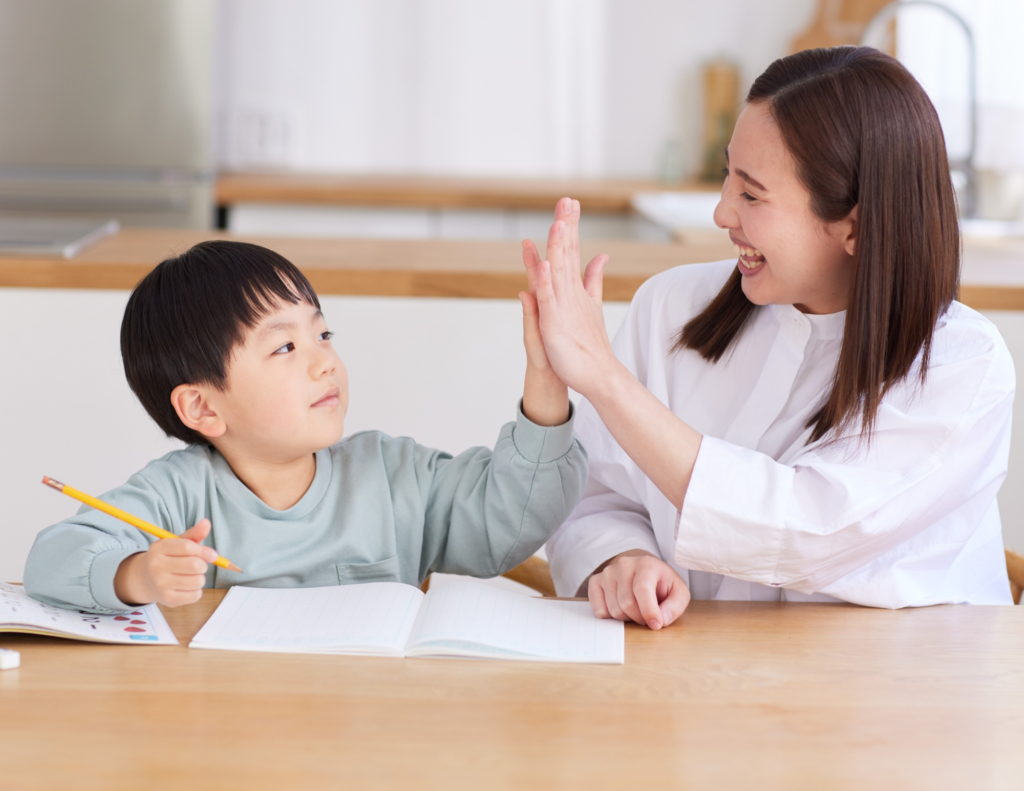
Common Pitfalls to Avoid
- Don’t rush your child into reading; honor their pace.
- Limit screens, workbooks, and “educational toys” that replace real interaction.
- Correct gently by modeling the right sound or word instead of pointing out mistakes.
- Avoid asking questions your child cannot answer—offer the language first, then invite them to use it.
- Make space for your child’s voice—pause, listen, and allow them time to respond.
Montessori Insight
Language is deeply tied to human development and connection. Maria Montessori wrote:
“The development of language is part of the development of the personality, for words are the natural means of expressing thoughts and establishing understanding between people.” – The Absorbent Mind
She also reminded us of the immense potential of early childhood:
“The child’s mind between three and six can be likened to a fertile field, ready to receive what will later germinate into knowledge.”
By creating a language-rich environment at home and in school, adults can nurture this fertile ground—helping children grow into confident readers, writers, and communicators who love language.
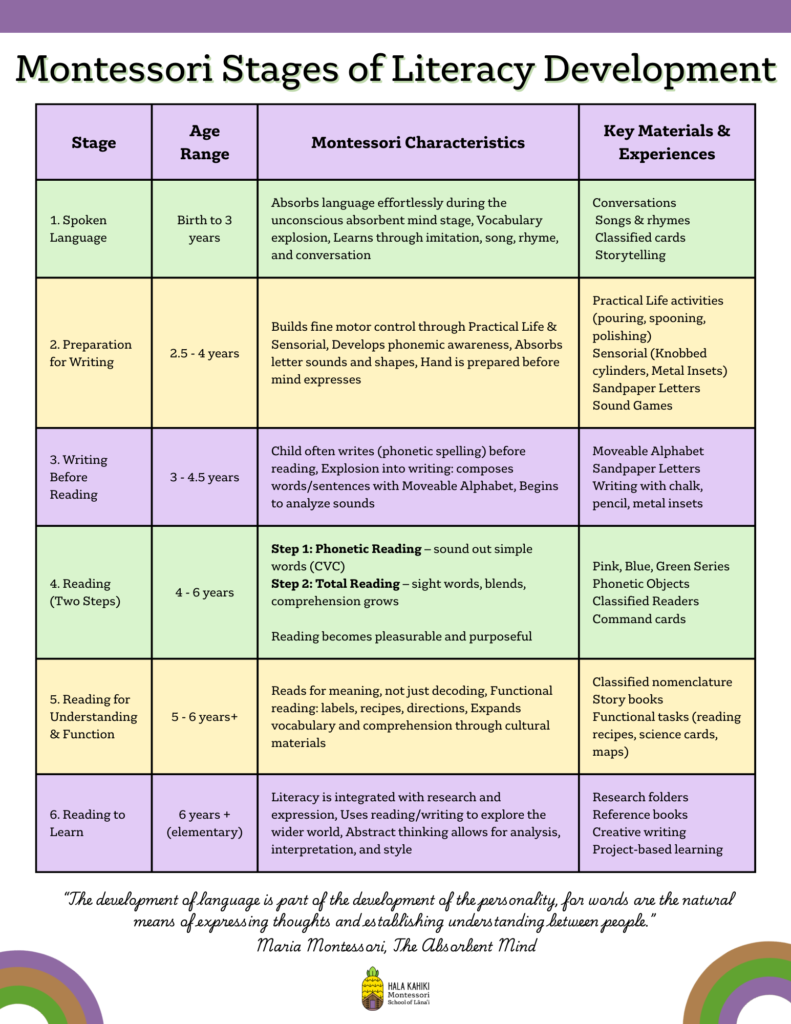
About Hala Kahiki
Designed for children 18 months – 6 years, Hala Kahiki is the first and only authentic Montessori school on Lāna’i. Under the guiding influence of specially trained teachers, children work with multi-sensorial materials to help them learn to think critically and become well-rounded global citizens. We would love to partner with you to give your children the best-possible early childhood education; please let us know how we can help you achieve your goals for your child.
